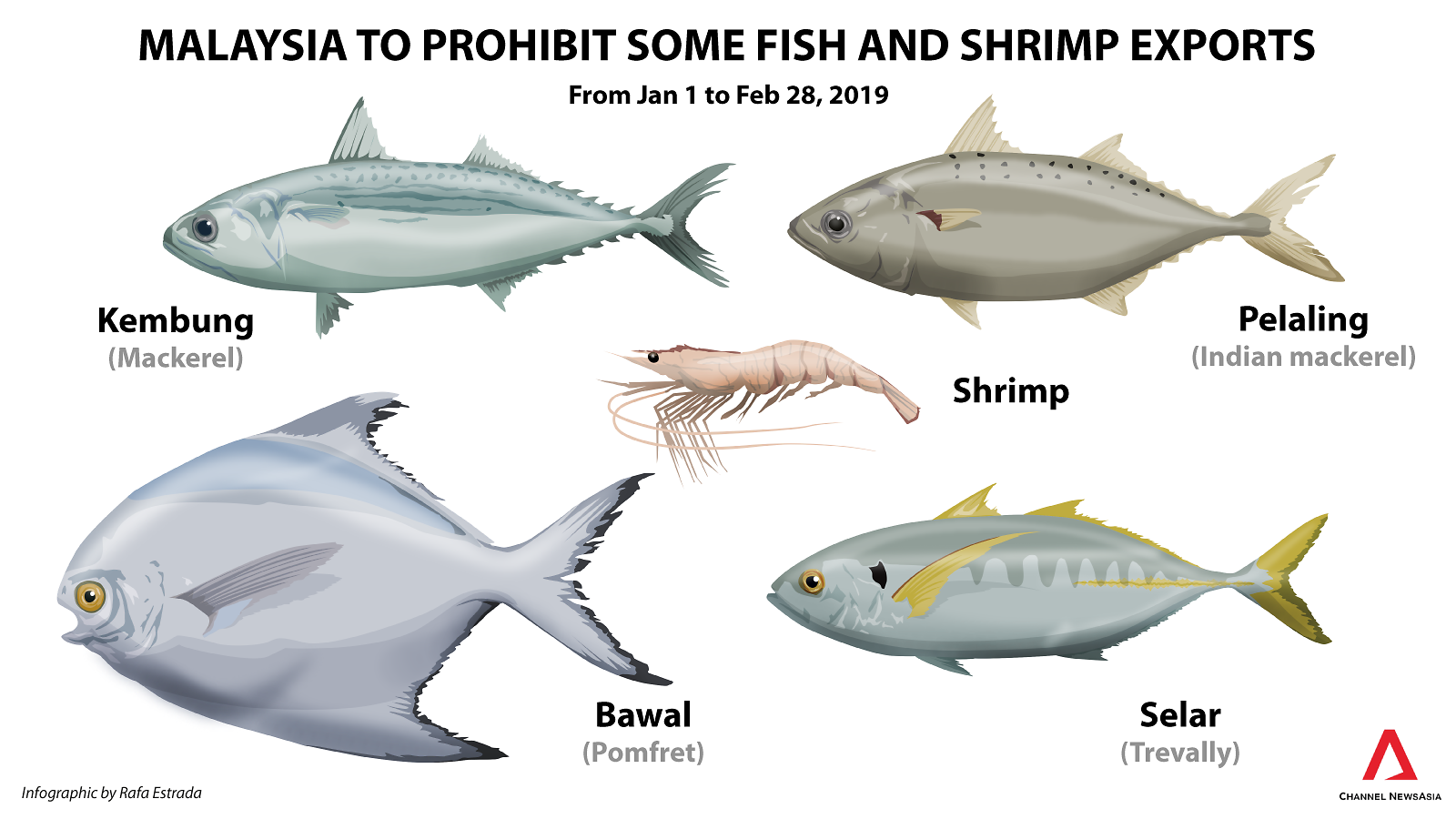SINGAPORE: While the price of fish and shrimp will go up as Chinese New Year comes around, the price hike will not be drastically different from previous years despite a fish export ban just announced by Malaysia, industry players said on Tuesday (Dec 18).
The Malaysian government said on Monday that it will prohibit the export of four species of wild-caught fish and shrimp to meet shortages in Malaysia during the monsoon and festive season.
Kembung (mackerel), selar (trevally), bawal (pomfret), pelaling (Indian mackerel) and shrimp will not be exported from Jan 1 to Feb 28 next year, according to Malaysia’s Agriculture and Agro-based Industry Minister Salahuddin Ayub.

Punggol Fish Merchants Association chairman Daniel Pe said such bans have been imposed for the past few years and industry players have adopted workarounds to deal with the potential shortfall.
“During the normal season, some of the merchants actually keep and freeze (the fish), so it doesn’t really affect … the prices,” he said, adding that with proper freezing techniques, the quality of fish can be maintained.
Periodic bans of fish exports from Malaysia have been reported from as early as 2013.
The increase of fish prices during Chinese New Year, which falls on Feb 5-6 next year, is generally because of high demand rather than any bans imposed by the Malaysian government, he said.
“The normal price increase of 20-30 per cent is due to the festive season, not because of restrictions.”
Mrs Belinda Lee, vice chairperson of the Seafood Industries Association Singapore, said that fish merchants already have some of these fish on “standby” in anticipation for the increase in demand over the Chinese New Year period.
“There’s no need to panic … It is the usual matter or problem that we’ve faced for the past five years,” she said.
“Now the pomfret and red grouper, we sell for S$25-30 a kilogramme but during Chinese New Year it becomes higher due to demand and supply. If you’re willing to pay, then fishmongers will sell.”
ALTERNATIVE SOURCES FOR FISH
Mr Ang Jwee Herng, director of Hai Sia Seafood, pointed out that alternative sources are available for the affected seafood.
“The fish can come from Indonesia or Thailand,” he said. “Fish like the kembung and selar, generally come from Thailand instead of Malaysia … Malaysia already doesn’t ship in a lot.”
File photo of mackerel. (Photo: AFP/Charly Triballeau)
In response to queries from Channel NewsAsia, supermarket chain Sheng Siong said that they do not see a “significant impact” caused by the ban.
“As these seafood can be sourced from other countries like Indonesia and Thailand, we do not foresee a significant impact,” said a Sheng Siong spokesperson.
“Besides, we also carry other fresh fish varieties such as threadfin, batang, white snapper in our stores and there are also frozen fish available in the market.”
Cold Storage and Giant also bring in fish from other countries, said a Dairy Farm Singapore spokesperson.
“Both Cold Storage and Giant practise diversified sourcing so we do source for fish and shrimp from other countries,” said the spokesperson.
Pomfret and mackerel can be from Indonesia, China or India while the supermarket chain works with Singapore fish farmers for its supply of trevally. Fresh and frozen prawns and shrimp are also sourced from Thailand and Vietnam, it added.





